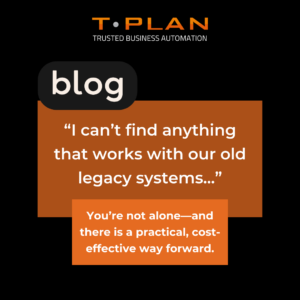A structured approach to efficient software testing
Software development is a balancing act between speed, quality and efficiency. Testing is at the core of this balance, ensuring that the software meets both functional and non-functional requirements. But not all testing is created equal, and the test pyramid is a model designed to optimise your testing strategy. It helps teams allocate resources efficiently by focusing on fast, low-cost tests at the base and reserving more complex, resource-intensive tests for the top of the pyramid.
In a world where software release cycles are shrinking, and the pressure to deliver high-quality products is greater than ever, adopting the right testing structure is critical. The automation testing pyramid provides a clear framework for ensuring comprehensive test coverage while controlling costs and speeding up feedback loops.
In this article we will explain what the testing pyramid is, explore each layer and show why it should be a proven model for building cost-effective, high-quality testing strategies.

Table of Contents
The concept of the testing pyramid
The testing pyramid is a visual framework that helps teams organise their testing process for maximum efficiency. It was introduced by Mike Cohn to guide teams in focusing on tests that are fast and easy to run at the base, while reserving more complex tests for the top.
The pyramid is divided into three key layers:
- Unit tests (at the base) focus on testing individual components or functions of the software. These tests are fast to execute, cost-effective and easy to maintain. Since they target isolated pieces of code, they help developers catch bugs early in the development cycle.
- Integration tests (in the middle) validate how various parts of the system work together. They are fewer in number but critical for catching bugs that surface when components interact and ensure that dependencies between modules function correctly.
- End-to-end (E2E) tests (at the top) simulate real user scenarios by testing the entire system from start to finish. These tests are the most complex and time-consuming but are crucial for validating workflows and ensuring that the system performs as expected under real-world conditions.
By following the principles of the test pyramid – focusing our attention heavily on unit tests and only using more complex end to end tests when its necessary – we can maintain speed and efficient without compromising on quality. This is especially important for testers working in Agile environments, where continuous feedback is key to succeeding with Agile practices.
Layers of the testing pyramid: what each layer means
2.1 Unit tests (base of the pyramid)
Definition:
Unit tests form the foundation of the test pyramid. These tests focus on individual components or functions of the code, verifying that each unit behaves as expected in isolation. Automation testing is essential here to ensure these tests are executed consistently and efficiently.
Scope:
Unit tests target small, isolated pieces of code, such as methods or classes. By isolating these units, developers and testers can ensure that the core building blocks of the application function correctly before integrating them into larger systems.
Tools and Frameworks:
Popular unit testing tools include:
- JUnit for Java
- NUnit for .NET
- PyTest for Python
Advantages:
- Fast execution: Unit tests are lightweight and can run frequently during development, providing rapid feedback.
- Low maintenance cost: Writing and maintaining unit tests is generally inexpensive, and they catch bugs early before they impact larger parts of the system.
- Precise debugging: Since unit tests target individual pieces of code, it is easier to pinpoint the source of a failure.
Example:
When developing a shopping cart for an e-commerce website, a unit test might check whether the function that adds items to the cart works correctly, confirming that it updates the item count and total price as expected, independent of other systems like payment gateways or databases.
2.2. Integration tests (middle layer)
Definition:
Integration tests come next in the test automation pyramid, focusing on how different components or modules interact with each other. These tests verify that the connections between units’ function correctly.
Scope:
These tests check the integration points – whether between different modules, databases, APIs or external services. They ensure that individual components work together and communicate properly.
Tools and Frameworks:
Common tools for integration testing include:
- Postman or REST Assured for API testing
- Selenium WebDriver for UI-related integrations
Advantages:
- Detects integration issues early: Integration tests help identify failures where components communicate, reducing the risk of broken functionality when units are combined.
- Comprehensive checks: These tests verify the system’s behaviour when different parts come together, providing more confidence than unit tests alone.
Challenges:
- More complex setup: Integration tests often require a proper test environment, such as databases or services, which can be difficult to configure.
Example:
Continuing with the e-commerce platform example, an integration test might verify that after an item is added to the cart, the system correctly updates the inventory in the database and displays the updated stock count on the product page.
For more on choosing the right integration testing strategy, read our blog on end-to-end vs. integration testing.
2.3. End-to-end tests (top of the pyramid)
Definition:
End-to-end (E2E) tests are positioned at the top of the test pyramid and simulate complete workflows from the user’s perspective. These tests validate that the entire system works as expected when all components interact.
Scope:
E2E tests cover everything from the UI to backend systems, ensuring that real-world scenarios – like logging in, submitting a form or completing a transaction – are functioning correctly. UI tests play a key role in validating that the user interface works properly across different devices and browsers.
Tools and Frameworks:
Tools for E2E testing include:
- Cypress
- Selenium
- Playwright
Advantages:
- Simulates real-world use cases: E2E tests ensure the application works from the user’s perspective, which is critical for validating user journeys.
- Validates system workflows: They confirm that the entire system functions smoothly, helping to ensure a seamless user experience.
Challenges:
- Slower and resource-intensive: E2E tests are complex and slower to execute, making them costlier to maintain compared to unit or integration tests.
- Higher maintenance: Since they depend on the entire system, changes in any part of the application can break an E2E test, requiring frequent updates.
Example:
In the e-commerce example, an E2E test might simulate a customer’s journey, from browsing products to adding items to the cart, checking out and receiving an order confirmation. This test ensures that all the components – UI, inventory, payment gateway and email service – work together as they would in real-world usage.
Check out our blog on cross-device test automation to see how T-Plan can help automate your end-to-end testing across multiple platforms.
Benefits of following the testing pyramid
The testing pyramid offers a streamlined approach to testing that improves efficiency, reduces costs and enhances software quality. Here’s how:
- Cost Efficiency
When we focus on unit tests at the base of the pyramid, it should be viewed as not just efficient – but also cost-effective. These tests are quick and inexpensive to run and allow us to catch and fix issues early before they turn into bigger, more expensive problems later in the process.
- Faster Feedback
With a strong foundation of unit tests, developers and testers get rapid feedback on code changes. These tests run quickly, helping you identify issues immediately and shorten development cycles. Integrated into CI/CD pipelines, fast feedback ensures each build is validated without delay.
- Improved Code Quality
Unit tests help certify that individual components function correctly, while integration and end-to-end tests validate their interactions. Having a layered testing approach leads to more robust and bug-free software, which in turn reduces the chances of issues in production.
- Reduced Maintenance
Fewer end to end tests mean less time spent maintaining complex and fragile test cases. By emphasising unit and integration tests, you keep your testing suite lean and easier to manage, minimising flaky tests and development slowdowns.
How T-Plan automation tools fit into the testing pyramid
At T-Plan our automation tools offer a comprehensive solution for executing tests across all layers of the testing pyramid. We understand that your testing strategy needs to be both efficient and scalable. Here’s how T-Plan fits into each layer:
Unit testing with T-Plan
While unit tests are often run using frameworks like JUnit or PyTest, T-Plan can enhance the process by:
- Cross-Platform Testing: Automate unit tests across multiple environments to ensure that your components function consistently.
- CI/CD Integration: T-Plan integrates unit tests into CI/CD pipelines, ensuring that tests run automatically after each build or deployment.
- Monitoring and Reporting: T-Plan provides robust reporting tools that track unit test performance and offer real-time insights into test results.
Integration testing with T-Plan
Integration tests are critical for validating system interactions, and T-Plan excels in automating these tests:
- Cross-Platform Support: T-Plan automates integration tests across various platforms, ensuring that services and APIs communicate as expected.
- API Testing: Automate REST and SOAP API tests, validating interactions between services.
- Simulating Complex Workflows: T-Plan can simulate complex workflows that span multiple components, ensuring your system’s integration points function without manual intervention.
End-to-end testing with T-Plan
T-Plan excels in automating end-to-end tests, ensuring that full system workflows are validated efficiently:
- Automated UI Testing: T-Plan automates end-to-end tests by simulating user interactions with your application across platforms (Windows, macOS, Linux, and mobile).
- Cross-Browser and Cross-Platform Testing: With T-Plan, you can test web applications across different browsers and operating systems, ensuring that your browser testing efforts cover all major environments.
- Scriptless Automation: T-Plan’s scriptless design allows non-technical users to create complex end-to-end test scenarios, reducing the need for extensive coding knowledge.
- Image-Based Testing: T-Plan’s advanced image-based testing validates graphical user interfaces (GUIs) to ensure all visual elements render correctly, making it ideal for GUI-intensive applications.
- Regression Testing: Automate full regression test suites to ensure that new changes do not break existing functionality – a key aspect of maintaining a reliable end-to-end testing strategy.
Testing pyramid in Agile and CI/CD environments
The testing pyramid aligns perfectly with the needs of Agile development and Continuous Integration/Continuous Deployment (CI/CD) workflows, making it not just a theoretical model. Both workflows require a solid, efficient testing strategy.
Agile development testing needs to be fast and reliable as it relies on short sprints and incremental releases. As the testing pyramid focuses on unit tests and integration tests, fast feedback on code changes ensures that any issues are caught well in advance and delays don’t slow down the development pace. By running numerous automated unit tests, Agile teams can verify that each small iteration of the software works correctly before it’s integrated into the larger system.
In a CI/CD testing, automated tests need to run continuously to ensure that each new piece of code integrates smoothly into the existing system. The testing pyramid complements CI/CD by ensuring that the bulk of the testing load is carried by fast, automated unit tests and integration tests, which are run after every build. T-Plan integrates seamlessly with CI/CD pipelines, automating tests at each level from unit to end-to-end, allowing you to catch problems early in the cycle and prevent bugs from leaking their way into production.
Also, the testing pyramid aligns with the shift-left testing philosophy, where testing is performed early and often throughout the development cycle. By focusing on unit tests and integration tests, you can catch bugs early before they propagate into larger issues that are harder and more expensive to fix. Shift-left testing encourages developers to take ownership of quality by running tests alongside development, making it easier to spot problems before they escalate. Learn more about shift-left testing principles in our blog.
Conclusion:
The testing pyramid is a practical approach for building a testing strategy that is efficient, scalable and cost-effective. By prioritising unit tests at the base, adding integration tests in the middle, and keeping end-to-end tests limited at the top, teams can strike the right balance between speed and thoroughness in their testing efforts. This approach ensure that bugs are caught earlier when they are easier and less expensive to fix, but it also provides assurance that your entire system works as it should in the real world.
T-Plan’s automation tools make it easy to handle testing at every level of the pyramid – whether it’s running cross-platform unit tests, managing complex integrations, or simulating end-to-end user workflows. T-Plan promises smooth integrations into any Continuous Integration/Continuous Deployment pipeline, making it a perfect fit for Agile teams that want to deliver high-quality software quickly and reliably.
As the landscape of software development continues to evolve the testing pyramid has been a dependable framework through which development teams can scale up their testing efforts without having to make sacrifices in quality. By adopting the testing pyramid and leveraging tools like T-Plan, your applications are ready to meet the challenges of growth, complexity and continuous delivery.
Ready to elevate your testing strategy? Contact T-Plan today and explore how our automation tools can help streamline your testing process.


